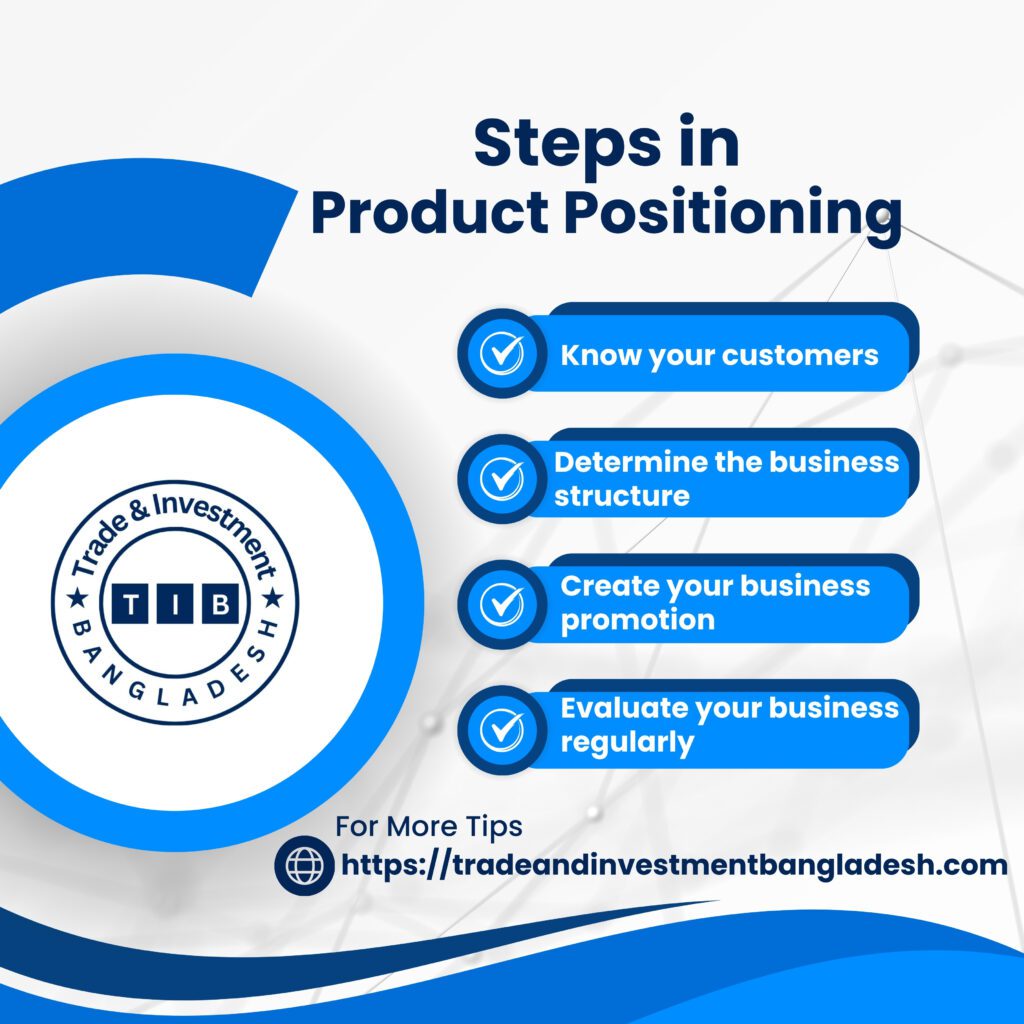
The Art of Buyer-Seller Matchmaking
The Art of Buyer-Seller Matchmaking
Md. Joynal Abdin*
Business Consultant & Digital Marketer
Co-Founder & CEO of Trade & Investment Bangladesh
Buyer-seller matchmaking holds immense significance in the business landscape, acting as a strategic cornerstone that facilitates mutually beneficial relationships between businesses. The following points highlight its key importance:
Optimized Resource Utilization: Buyer-seller matchmaking enables businesses to optimize their resources by connecting with partners that complement their strengths and fill gaps in their capabilities. This strategic alignment helps in efficient resource utilization.
Market Expansion and Reach: Forming alliances with the right buyers or sellers allows businesses to expand their market reach. This can be especially crucial for entering new geographic regions or tapping into diverse customer segments.
Enhanced Innovation and Collaboration: Collaborative partnerships foster innovation through the exchange of ideas, technologies, and expertise. By aligning with compatible counterparts, businesses can stay at the forefront of industry trends and technological advancements.
Risk Mitigation: Buyer-seller matchmaking can help mitigate risks associated with market fluctuations, economic uncertainties, or industry challenges. Diversifying partnerships spreads risk and creates a more resilient business ecosystem.
Increased Competitiveness: Strategic alliances enhance the competitiveness of businesses by allowing them to offer more comprehensive solutions, products, or services. This competitive edge can be vital in crowded markets.
Cost Savings: Collaborative efforts often result in cost savings through economies of scale, joint procurement, or shared infrastructure. This can contribute significantly to improving overall business profitability.
Adaptation to Market Dynamics: The business landscape is dynamic, and buyer-seller matchmaking helps companies adapt to changing market conditions. Through flexible partnerships, businesses can quickly respond to evolving customer needs and industry trends.
Customer-Centric Approach: Building partnerships with businesses that share similar values and priorities helps in creating a more customer-centric approach. This alignment enhances the overall customer experience and satisfaction.
Access to New Capabilities: Businesses can gain access to new capabilities, technologies, or skills through partnerships with the right buyers or sellers. This access can accelerate growth and foster a culture of continuous improvement.
Long-Term Sustainability: Establishing enduring relationships through buyer-seller matchmaking contributes to the long-term sustainability of businesses. These partnerships create a foundation for mutual growth and resilience in the face of challenges.
In summary, buyer-seller matchmaking is not merely a transactional process but a strategic imperative that empowers businesses to thrive in a dynamic and competitive environment by fostering collaboration, innovation, and sustained growth.
-
Understanding Buyer-Seller Dynamics:
The dynamics between buyers and sellers in the business world are complex and multifaceted, encompassing a range of interactions, negotiations, and relationships. Understanding these dynamics is crucial for businesses to navigate the marketplace effectively. Here are key aspects of the dynamics between buyers and sellers:
- Interdependence: Buyers and sellers are inherently interdependent. Buyers seek products or services to fulfill their needs, while sellers rely on buyers to purchase their offerings. This interdependence forms the basis of the economic exchange that drives business transactions.
- Information Asymmetry: Information is a critical element in the buyer-seller relationship. However, there is often an information asymmetry, where one party may have more information than the other. This can create challenges in negotiations and decision-making.
- Power Dynamics: The balance of power between buyers and sellers can shift based on various factors such as market conditions, the uniqueness of the product or service, and the availability of alternatives. Understanding and navigating these power dynamics is essential for successful transactions.
- Relationship Building: Building strong relationships is key to long-term success for both buyers and sellers. Trust and communication play crucial roles in fostering positive relationships that extend beyond individual transactions.
- Negotiation Strategies: Negotiation is a fundamental aspect of the buyer-seller dynamic. Both parties engage in negotiations to secure the best terms, pricing, and conditions. Negotiation strategies may vary based on factors such as market competition and the nature of the product or service.
- Evolving Consumer Behavior: Changes in consumer behavior influence the dynamics between buyers and sellers. With the rise of digital technologies, consumers often conduct thorough research before making a purchase, altering the traditional roles of information dissemination and decision-making.
- Globalization: In a globalized economy, buyers and sellers may operate across borders. This introduces additional complexities related to cultural differences, regulatory considerations, and logistical challenges.
- Technology Impact: Technological advancements have transformed the buyer-seller relationship. E-commerce, online marketplaces, and digital communication tools have altered the way transactions occur, providing new channels for engagement.
- Customization and Personalization: Buyers increasingly seek personalized and customized offerings. Sellers need to understand and respond to individual buyer preferences, leading to a more tailored and customer-centric approach.
- Post-Sale Interaction: The relationship between buyers and sellers doesn’t end with a sale. Post-sale interactions, including customer support, service, and feedback loops, are critical for maintaining customer satisfaction and loyalty.
- Sustainability and Ethical Considerations: Buyers are placing greater importance on sustainability and ethical business practices. Sellers need to align with these values to meet the evolving expectations of socially conscious consumers.
Understanding and adapting to these dynamics is essential for businesses to navigate the complexities of the buyer-seller relationship successfully. It requires a strategic and customer-centric approach that goes beyond transactional interactions and focuses on building enduring partnerships.

-
The Evolution of Buyer-Seller Matchmaking:
As the business landscape continues to evolve, buyer-seller matchmaking is also undergoing transformations driven by emerging trends and innovations. These developments aim to enhance efficiency, foster better connections, and adapt to changing market dynamics. Here are some emerging trends in the field of buyer-seller matchmaking:
AI and Predictive Analytics: Artificial Intelligence (AI) and predictive analytics are being increasingly used to analyze vast amounts of data to identify potential matches between buyers and sellers. These technologies enable more accurate predictions of compatibility based on historical data, behavior patterns, and market trends.
Blockchain for Transparency and Trust: Blockchain technology is gaining traction in buyer-seller matchmaking to enhance transparency and trust in transactions. Smart contracts and decentralized ledgers can streamline processes, reduce fraud, and provide a secure and transparent platform for transactions.
Advanced Matching Algorithms: Innovations in matching algorithms are improving the precision of pairing buyers and sellers. These algorithms take into account a broader set of criteria, including behavioral data, preferences, and real-time market conditions, to create more accurate and dynamic matches.
Virtual and Augmented Reality (VR/AR): VR and AR technologies are being leveraged to enhance the virtual experience of buyer-seller interactions. Virtual showrooms, product simulations, and immersive experiences are becoming valuable tools for showcasing products and services in a more engaging manner.
Chatbots and Virtual Assistants: Chatbots and virtual assistants powered by natural language processing (NLP) are being integrated into matchmaking platforms. They facilitate real-time communication, answer queries, and guide users through the matchmaking process, enhancing user experience and accessibility.
Social Media Integration: Integration with social media platforms is becoming increasingly common in buyer-seller matchmaking. This allows for a more comprehensive understanding of the business profile and reputation of potential partners, as well as facilitating direct communication.
Ecosystem Collaboration Platforms: Platforms that bring together entire ecosystems of buyers and sellers are emerging. These platforms facilitate collaboration, networking, and partnerships among businesses within a specific industry or niche.
Data Privacy and Security Measures: With growing concerns about data privacy, buyer-seller matchmaking platforms are implementing robust security measures and compliance standards to ensure the protection of sensitive information and build trust among participants.
Subscription-Based Models: Some buyer-seller matchmaking platforms are adopting subscription-based models, providing businesses with ongoing access to a curated pool of potential partners. This model encourages long-term relationships and continuous engagement.
Sustainability and ESG Integration: As sustainability gains prominence, buyer-seller matchmaking platforms are incorporating Environmental, Social, and Governance (ESG) criteria into their matching algorithms. This allows businesses to align with partners who share similar values and sustainability goals.
Collaborative Intelligence Platforms: Platforms that leverage collaborative intelligence, combining the insights and expertise of multiple stakeholders, are emerging. These platforms foster a collaborative approach to problem-solving and decision-making in buyer-seller relationships.
Real-Time Feedback and Reviews: Real-time feedback mechanisms and review systems are becoming integral to buyer-seller matchmaking platforms. This feature allows participants to share their experiences, building credibility and helping others make informed decisions.
These emerging trends indicate a shift toward more sophisticated, data-driven, and user-centric approaches in buyer-seller matchmaking. Businesses that embrace these innovations can gain a competitive edge by forging strategic partnerships and adapting to the evolving needs of the market.
-
The Art of Identifying Ideal Matches:
Identifying compatible buyer-seller partnerships is a critical aspect of building successful and mutually beneficial business relationships. The criteria for determining compatibility can vary across industries and businesses, but several key factors are universally important. Here are criteria that businesses often consider when identifying compatible buyer-seller partnerships:
Strategic Alignment: Businesses seek partners with strategic alignment in terms of long-term goals, vision, and mission. Compatibility in strategic objectives ensures that both parties are working towards common outcomes and shared success.
- Complementary Capabilities: Compatible partnerships often involve businesses with complementary capabilities. This could include expertise, resources, technology, or skills that complement and enhance each other, leading to a more comprehensive and competitive offering.
- Cultural Fit: Cultural fit is crucial for long-term collaboration. Businesses look for partners whose values, ethics, and corporate culture align with their own. A shared cultural foundation can contribute to smoother communication and collaboration.
- Financial Stability: Financial stability is a key criterion for identifying compatible partnerships. Businesses want to work with partners who are financially healthy and have a track record of fiscal responsibility. This helps mitigate risks and ensures the sustainability of the partnership.
- Market Knowledge and Expertise: Compatibility often hinges on the market knowledge and expertise that each party brings to the partnership. Businesses look for partners who understand the industry, market trends, and customer needs, bringing valuable insights to the collaboration.
- Innovation and Adaptability: In rapidly changing business environments, adaptability and innovation are essential. Compatible partners are those that demonstrate a commitment to innovation, a willingness to adapt to market dynamics, and the ability to stay ahead of industry trends.
- Communication and Trust: Effective communication and trust are foundational for any successful partnership. Businesses seek partners with open and transparent communication styles, fostering trust and ensuring a healthy working relationship.
- Geographic and Market Presence: Compatibility can be influenced by geographic and market presence. Partnerships with businesses that have a strong presence in specific regions or markets can provide strategic advantages and access to a broader customer base.
- Regulatory Compliance: Businesses must ensure that potential partners adhere to relevant regulations and compliance standards. Regulatory alignment is crucial to avoid legal issues and ensure ethical business practices.
- Flexibility in Relationship Dynamics: Compatible partnerships involve a level of flexibility in how the relationship evolves. Businesses look for partners who are open to adapting to changing circumstances, accommodating growth, and addressing challenges collaboratively.
- Shared Customer Focus: Partnerships that prioritize a customer-centric approach tend to be more successful. Businesses seek partners who share a commitment to delivering value to customers and enhancing the overall customer experience.
- Risk Tolerance and Management: Assessing risk tolerance and management strategies is vital. Compatible partners should have similar attitudes toward risk, and there should be a clear understanding of how risks will be identified, assessed, and managed throughout the partnership.
- Mutual Respect and Integrity: Mutual respect and integrity form the basis of a strong partnership. Businesses seek partners with a reputation for ethical conduct, professionalism, and a commitment to upholding shared values.
By carefully evaluating these criteria, businesses can identify partners with whom they are more likely to establish a compatible, collaborative, and enduring relationship, ultimately leading to mutual success in the marketplace.

-
Navigating the Benefits of Matchmaking:
Forming strategic alliances between buyers and sellers can offer a myriad of advantages for both parties involved. These alliances go beyond transactional relationships, fostering long-term partnerships that contribute to the growth and success of each participant. Here are various advantages for both buyers and sellers in forming strategic alliances:
5.1 Advantages for Buyers:
- Cost Savings: Buyers can benefit from cost savings through economies of scale and joint procurement. Strategic alliances allow for bulk purchasing and shared resources, reducing overall procurement costs.
- Access to Expertise: Strategic alliances provide buyers with access to the expertise, knowledge, and specialized skills of their partners. This access can be particularly valuable when entering new markets or industries.
- Risk Mitigation: Buyers can mitigate risks associated with market uncertainties, supply chain disruptions, and other challenges by forming strategic alliances. Diversifying sources and collaborating with reliable partners enhances resilience.
- Innovation and Product Development: Collaboration with sellers brings innovation and accelerates product development. Buyers can leverage the seller’s capabilities, technologies, and R&D efforts to stay competitive and meet evolving customer demands.
- Market Expansion: Buyers can expand their market reach by forming strategic alliances with sellers that have a strong presence in different regions. This expansion enables access to new customer segments and opportunities.
- Improved Negotiation Power: Strategic alliances can enhance the negotiation power of buyers. As part of a larger network or consortium, buyers may negotiate better terms, pricing, and conditions with sellers.
- Shared Marketing and Promotion: Collaborative marketing efforts between buyers and sellers in strategic alliances can result in shared promotional activities. This joint approach can increase brand visibility and market penetration.
- Operational Efficiency: Buyers can achieve operational efficiency by aligning processes with their strategic alliance partners. Streamlined operations and shared resources contribute to cost-effectiveness and overall business agility.
- Access to New Technologies: Buyers can gain access to new and advanced technologies through strategic alliances. This access is particularly beneficial when dealing with sellers at the forefront of technological innovation.
5.2 Advantages for Sellers:
- Increased Market Reach: Sellers can expand their market reach by partnering with buyers who have established customer bases in different regions or industries. This expansion can lead to increased sales and revenue.
- Diversification of Customer Base: Strategic alliances allow sellers to diversify their customer base, reducing dependency on a single market segment. This diversification enhances the resilience of the seller’s business.
- Enhanced Credibility and Reputation: Aligning with reputable buyers can enhance the credibility and reputation of sellers. Buyers’ endorsement and partnership can build trust among other potential customers and stakeholders.
- Access to Distribution Channels: Sellers can gain access to new distribution channels through strategic alliances with buyers. This access can facilitate the efficient distribution of products or services to a broader audience.
- Market Insights and Feedback: Collaboration with buyers provides sellers with valuable market insights and feedback. This information is crucial for adapting products, services, and strategies to meet evolving market demands.
- Joint Product Offerings: Sellers can collaborate with buyers to create joint product offerings or bundled solutions. This can result in unique value propositions that appeal to a wider customer base.
- Financial Stability: Forming strategic alliances can contribute to the financial stability of sellers. Long-term contracts and partnerships provide a predictable revenue stream, fostering stability and growth.
- Access to New Opportunities: Sellers can access new business opportunities through strategic alliances, including participation in joint ventures, consortiums, or collaborative projects that may not be feasible individually.
- Operational Efficiency and Resource Optimization: Strategic alliances allow sellers to optimize resources and improve operational efficiency. Shared resources, knowledge, and capabilities contribute to cost-effectiveness and competitiveness.
In summary, strategic alliances offer a range of advantages for both buyers and sellers, creating a symbiotic relationship that goes beyond immediate transactions. These alliances foster collaboration, innovation, and shared success in an increasingly interconnected and competitive business landscape.

-
The Science Behind Effective Matchmaking:
The role of technology, analytics, and market research in the matchmaking process has become increasingly pivotal in today’s digital age. These tools empower businesses to make informed decisions, optimize processes, and create more precise and effective buyer-seller connections. Here’s an overview of their roles in the matchmaking process:
- Technology in Matchmaking:
Digital Platforms: Technology enables the creation and maintenance of digital platforms specifically designed for matchmaking. Online marketplaces, B2B platforms, and other digital spaces facilitate the identification and connection of potential buyers and sellers on a global scale.
Communication Tools: Technology provides communication tools such as instant messaging, video conferencing, and collaborative workspaces, enabling seamless interactions between buyers and sellers regardless of geographical locations.
Automation: Automation tools streamline various aspects of the matchmaking process. Automated workflows can handle tasks like data entry, documentation, and repetitive communication, allowing human resources to focus on more strategic aspects of the matchmaking relationship.
AI and Machine Learning: Artificial Intelligence (AI) and machine learning algorithms are employed to analyze vast datasets and predict potential matches based on historical patterns, preferences, and other relevant criteria. This enhances the efficiency and accuracy of matchmaking processes.
Blockchain: Blockchain technology is utilized for secure and transparent transactions. It enhances trust and reduces the risk of fraud by providing a decentralized and tamper-resistant ledger for recording transactions and contractual agreements.
- Analytics in Matchmaking:
Data Analytics: Advanced data analytics tools analyze large datasets to extract meaningful insights. These insights help in understanding market trends, buyer behavior, and seller performance, contributing to more informed matchmaking decisions.
Behavioral Analytics: Analyzing the behavior of buyers and sellers on digital platforms provides valuable information about their preferences, engagement patterns, and decision-making processes. This data can be used to refine matchmaking algorithms and improve the overall user experience.
Predictive Analytics: Predictive analytics leverages historical data and statistical algorithms to forecast future trends and outcomes. In the context of matchmaking, predictive analytics helps in identifying potential matches with a higher likelihood of success.
Performance Metrics: Analytics tools track and measure the performance of matchmaking initiatives. Key performance indicators (KPIs) such as conversion rates, customer satisfaction, and partnership longevity help evaluate the success of the matchmaking process.
- Market Research in Matchmaking:
Understanding Market Dynamics: Market research plays a crucial role in understanding the dynamics of specific industries, market trends, and competitive landscapes. This knowledge guides matchmaking platforms in aligning buyers and sellers with compatible market conditions.
Identifying Target Audiences: Market research helps in identifying and profiling target audiences. This information aids in creating buyer personas and allows matchmaking platforms to tailor their services to the specific needs and preferences of different market segments.
Competitor Analysis: Analyzing competitors provides valuable insights into their strengths, weaknesses, and strategies. Matchmaking platforms can use this information to differentiate themselves, identify unique selling propositions, and enhance their competitive positioning.
Regulatory and Compliance Considerations: Market research helps matchmaking platforms stay informed about industry regulations and compliance requirements. This knowledge is crucial for ensuring that partnerships comply with legal standards and ethical considerations.
Feedback and Iterative Improvement: Ongoing market research allows matchmaking platforms to collect feedback from users, adapt to changing market conditions, and continuously improve their algorithms and services to better meet the needs of both buyers and sellers.
In conclusion, technology, analytics, and market research are integral components of the modern matchmaking process. By leveraging these tools, businesses can create more efficient, data-driven, and successful buyer-seller connections, fostering sustainable and mutually beneficial relationships.
-
Overcoming Challenges in Matchmaking:
Forming and maintaining successful buyer-seller relationships is essential for business success, but it comes with its share of challenges. Addressing these challenges proactively is crucial to building enduring and mutually beneficial partnerships. Here are some common challenges faced in forming and maintaining successful buyer-seller relationships:
7.1. Communication Barriers:
Challenge: Ineffective communication can lead to misunderstandings, delays, and a breakdown in the relationship.
Solution: Establish clear communication channels, set expectations, and encourage open and transparent dialogue. Regularly check in with both parties to address concerns and ensure alignment.
7.2. Misaligned Expectations:
Challenge: Misunderstandings or misalignment in expectations regarding pricing, delivery, quality, or other terms can strain the relationship.
Solution: Clearly define expectations from the outset. Develop comprehensive agreements, and regularly review and update them as needed. Foster a culture of transparency to ensure both parties are on the same page.
7.3. Changing Market Conditions:
Challenge: Rapid changes in market conditions, such as economic downturns or industry disruptions, can impact the dynamics of the buyer-seller relationship.
Solution: Stay vigilant about market trends. Develop contingency plans to adapt to changing conditions and work collaboratively to navigate challenges.
7.4. Power Imbalances:
Challenge: Power imbalances, where one party has more influence or leverage, can lead to unfair negotiations or an unequal distribution of benefits.
Solution: Foster a relationship built on mutual respect. Seek to balance power dynamics through fair negotiations, transparency, and equitable distribution of risks and rewards.
7.5. Lack of Flexibility:
Challenge: Inflexibility in adapting to changing circumstances or accommodating each other’s evolving needs can hinder relationship growth.
Solution: Cultivate a culture of flexibility. Be open to adjusting terms, processes, or strategies as needed. Regularly assess and discuss how the partnership can evolve to meet changing demands.
7.6. Trust Issues:
Challenge: Building and maintaining trust is fundamental, and any breach can erode the foundation of the buyer-seller relationship.
Solution: Prioritize transparency, consistency, and reliability. Deliver on promises, communicate openly, and address issues promptly to build and reinforce trust over time.
7.7. Quality Assurance:
Challenge: Quality issues with products or services can lead to dissatisfaction and strain the buyer-seller relationship.
Solution: Implement robust quality control measures. Foster a culture of continuous improvement, and address quality concerns collaboratively. Regularly communicate about quality standards and expectations.
7.8. Cultural Differences:
Challenge: Cultural disparities in communication styles, business practices, and decision-making processes can lead to misunderstandings.
Solution: Invest in cultural awareness training for both parties. Foster an inclusive and culturally sensitive environment, and encourage open discussions to bridge gaps in understanding.
7.9. Short-Term Focus:
Challenge: A short-term focus on immediate gains rather than long-term relationship building can limit the potential for sustained success.
Solution: Emphasize the importance of long-term collaboration. Align goals, create shared objectives, and invest in relationship-building strategies that extend beyond immediate transactions.
7.10. External Influences:
Challenge: External factors such as changes in regulations, geopolitical events, or economic downturns can impact the stability of buyer-seller relationships.
Solution: Stay informed about external factors and their potential impact. Develop contingency plans and maintain open communication to navigate challenges collaboratively.
By proactively addressing these challenges, businesses can cultivate resilient and successful buyer-seller relationships. Continuous communication, adaptability, and a commitment to mutual success are key elements in overcoming obstacles and building partnerships that thrive over time.

-
The Process of Establishing and Nurturing Connections:
Establishing and nurturing successful buyer-seller connections is a strategic process that involves careful planning, effective communication, and continuous relationship management. Here’s a step-by-step outline to guide businesses in building and maintaining strong buyer-seller connections:
8.1. Define Objectives and Criteria: Clearly outline the objectives of the buyer-seller connection, including mutual goals and expectations. Establish criteria for compatibility, considering factors such as values, capabilities, and strategic alignment.
8.2. Market Research and Identification: Conduct thorough market research to identify potential buyers or sellers that align with the defined criteria. Utilize data analytics to assess market trends, competitor landscapes, and emerging opportunities.
8.3. Create a Comprehensive Profile: Develop comprehensive profiles for both buyers and sellers, highlighting key strengths, capabilities, and offerings. Include information about corporate culture, values, and long-term strategic goals.
8.4. Initiate Contact and Express Interest: Reach out to potential partners through formal channels, introductions, or networking events. Express genuine interest in establishing a collaborative relationship and highlight the potential benefits for both parties.
8.5. Conduct Initial Meetings and Assess Compatibility: Arrange initial meetings to discuss goals, expectations, and assess compatibility. Use these meetings to explore shared values, discuss potential challenges, and gauge the willingness to collaborate.
8.6. Negotiate Terms and Conditions: Initiate negotiations to define the terms and conditions of the buyer-seller connection. Clearly outline responsibilities, deliverables, timelines, pricing structures, and any other relevant terms.
8.7. Formalize Agreements: Draft and formalize agreements or contracts that detail the terms of the partnership. Ensure legal and compliance considerations are addressed to mitigate risks and ensure a clear understanding of obligations.
8.8. Implement Collaborative Technologies: Leverage collaborative technologies, such as shared project management tools or communication platforms, to facilitate efficient and transparent collaboration. Ensure that both parties have access to the necessary tools for effective communication and project management.
8.9. Establish Key Performance Indicators (KPIs): Define key performance indicators (KPIs) that align with the objectives of the buyer-seller connection. Regularly measure and assess performance against these KPIs to ensure alignment with goals.
8.10. Regular Communication and Relationship Building: Maintain regular communication channels to foster a strong relationship. Schedule regular check-ins, updates, and strategic meetings to discuss progress, address concerns, and identify opportunities for improvement.
8.11. Adapt and Innovate: Stay agile and be open to adapting the partnership based on changing market conditions, customer needs, or industry trends. Foster a culture of innovation and encourage both parties to contribute ideas for continuous improvement.
8.12. Conflict Resolution and Problem-Solving: Establish a framework for conflict resolution and problem-solving. Address issues promptly and collaboratively, seeking solutions that prioritize the long-term success of the partnership.
8.13. Performance Evaluation and Feedback: Conduct regular performance evaluations to assess the effectiveness of the buyer-seller connection. Solicit feedback from both parties and use this information to refine processes and enhance the overall relationship.
8.14. Celebrate Successes and Milestones: Acknowledge and celebrate successes, milestones, and positive contributions from both buyers and sellers. Reinforce a positive and collaborative culture within the partnership.
8.15. Continuous Improvement and Adaptation: Embrace a mindset of continuous improvement and adaptation. Regularly reassess goals, strategies, and market dynamics to ensure the buyer-seller connection remains relevant and successful.
By following this step-by-step process, businesses can establish and nurture successful buyer-seller connections that are built on trust, transparency, and a shared commitment to mutual success.
Closing Remarks:
The article explores the multifaceted dynamics and essential components of buyer-seller matchmaking, emphasizing its strategic importance in the business landscape. It underscores the significance of identifying compatible partnerships, highlighting factors such as strategic alignment, complementary capabilities, and cultural fit. The role of technology, analytics, and market research emerges as pivotal, enabling precise matchmaking, transparent communication, and informed decision-making.
Furthermore, the article outlines the various advantages for both buyers and sellers in forming strategic alliances, encompassing cost savings, market expansion, and collaborative innovation. It delves into the emerging trends shaping the future of buyer-seller matchmaking, including AI integration, blockchain for transparency, and sustainability considerations.
Challenges in forming and maintaining successful buyer-seller relationships are explored, emphasizing the need for effective communication, trust-building, and adaptability. The step-by-step process for establishing and nurturing these connections is delineated, covering objectives definition, market research, negotiation, technology integration, and continuous improvement.
In essence, the article underscores the intricate interplay of factors in buyer-seller matchmaking, from initial contact to sustained collaboration, emphasizing the importance of strategic alignment, technological innovation, and a commitment to long-term success.
The Art of Buyer-Seller Matchmaking

Mr. Md. Joynal Abdin is a Business Consultant & Digital Marketer based in Dhaka, Bangladesh. He is Founder & CEO, Trade & Investment Bangladesh and Co-Founder & CEO of Bangladesh Trade Center. Previously he served at Dhaka Chamber of Commerce & Industry (DCCI) as Executive Secretary; DCCI Business Institute (DBI) as Executive Director; SME Foundation as Deputy Manager; and the Federation of Bangladesh Chambers of Commerce & Industry (FBCCI) as Assistant Secretary.
The list of services Mr. Abdin is offering includes but not limited to Business Mentorship, Business Research and Documentations, Export Market Selection and Product Positioning at Home and Abroad; Buyers-Sellers Matchmaking; Website Development; Search Engine Optimization (SEO); and Social Media Marketing etc.
The Art of Buyer-Seller Matchmaking